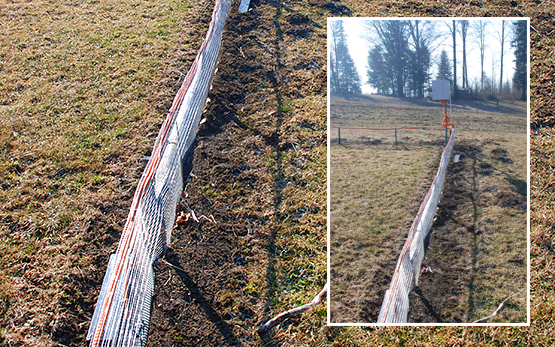The populations of water voles are subject to cyclical trends. If water voles are not controlled, mass reproductions can occur every five to seven years, with dramatic consequences for meadows and pastures:
- Yield losses, to total failure of crops
- Soiled forage
- Greater wear-and-tear of harvest machinery
- Deterioration of botanic composition and feed quality
It is advisable to control water voles in as early a phase of population growth as possible – i.e. at a point when they are not yet causing any obvious problems. Since water voles are not just pests, but are also the basic food resource of many wild animals, an environmentally sound vole-control method is needed. We test control strategies that are cost-efficient and wildlife-friendly – for instance, we test the effect of specific fences on vole densities and population trends.






